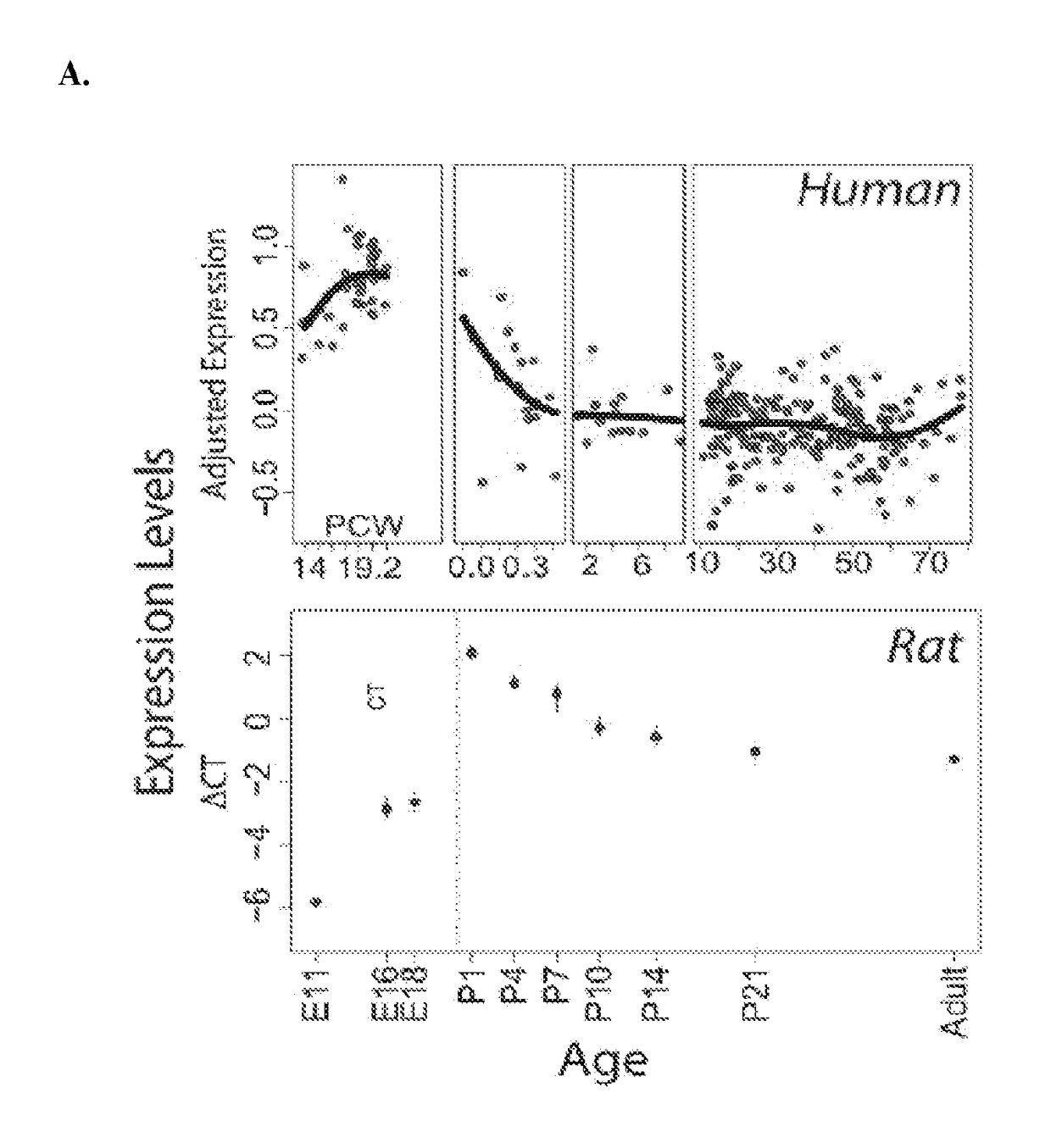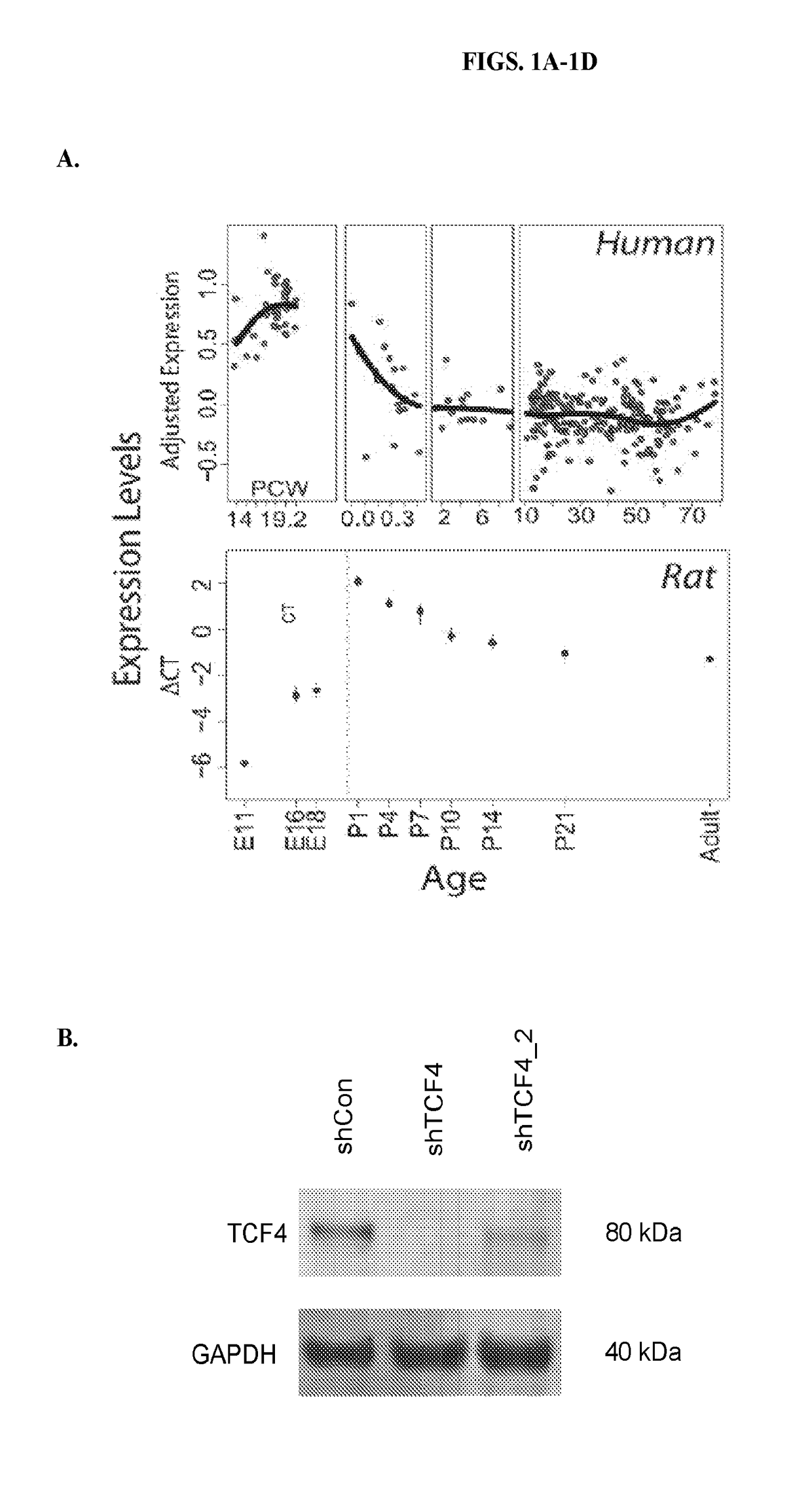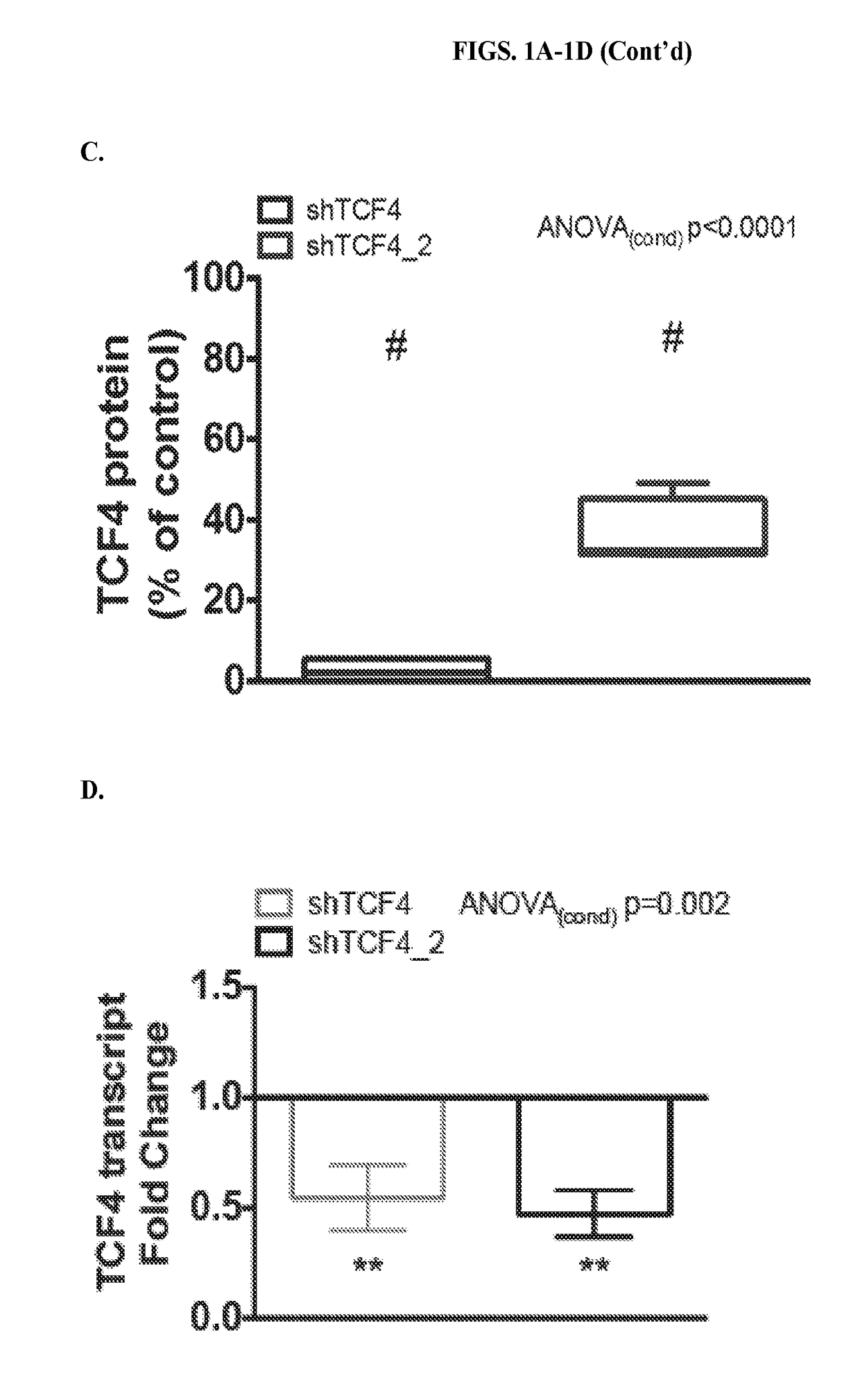Treatment of Neurological and Neurodevelopmental Diseases and Disorders Associated with Aberrant Ion Channel Expression and Activity
a technology of aberrant ion channel and expression and activity, which is applied in the field of treatment of neurological and neurodevelopmental diseases and disorders associated with aberrant ion channel expression and activity, can solve the problems of difficult identification of therapeutic targets, and achieve the effects of increasing firing frequency, reducing amplitude, and increasing firing frequency
- Summary
- Abstract
- Description
- Claims
- Application Information
AI Technical Summary
Benefits of technology
Problems solved by technology
Method used
Image
Examples
example 1
[0072]Validation of shRNA Constructs to Create a Cell Autonomous Model of TCF4 Haploinsufficiency
[0073]Experiments were performed to more precisely characterize the developmental expression patterns of TCF4 in both rat and human to determine critical periods of expression. Analogous expression trajectories were observed in both human and rat, thus suggesting developmental regulation of TCF4 may be similar between species. TCF4 mRNA expression peaks in late prenatal life, corresponding to the third trimester of fetal life in humans and postnatal day 1 (P1) in rat and declines during early childhood before leveling off into adulthood (FIG. 1A). The rapid rise in TCF4 transcripts during corticogenesis likely implicates a critical time period for TCF4 biology. Accordingly, the developmental expression pattern of TCF4 across the lifespan is similar between humans and rodents.
[0074]To gain insight into the function of TCF4 during this prenatal peak in expression and to create a cellular m...
example 2
TCF4 Regulates the Intrinsic Excitability of Prefrontal Cortical Neurons
[0076]To determine if in utero suppression of TCF4 negatively impacts the physiology of cortical neurons, the intrinsic excitability was assayed by performing whole-cell recordings from IUE transfected neurons, and the frequency of AP spiking elicited by a series of depolarizing current pulses was measured. TCF4 knockdown produced a severe and consistent reduction of AP output frequency compared to shCon cells (FIGS. 2A and 2B; p<0.0001). The maximum number of spikes elicited by any size current pulse for each cell was also significantly reduced by both TCF4 shRNA constructs (FIG. 2C; p<0.0001). Several other intrinsic excitability measurements were obtained from these recordings (FIG. 9 and FIGS. 10A-10C), and the only consistent effect observed between both shTCF4 and shTCF4_2 was an increase in the resting membrane potential (RMP), (FIG. 9; p<0.001) and the peak amplitude of the AP (FIG. 9; p<0.03). Consisten...
example 3
[0081]TCF4 Regulates the Expression of KCNQ1 and SCN10a, Two Ion Channel Genes that Regulate Spike Frequency Adaptation
[0082]As described in the above Examiner, TCF4 was determined to associate significantly with the AHP; however, voltage-clamp experiments did not identify the exact conductance(s) regulated by TCF4. Therefore, molecular profiling was used to identify the particular genes responsible for the intrinsic excitability phenotype by adapting translating ribosome affinity purification (TRAP) (Heiman et al., 2014; 2008) for use with IUE, in a novel approach termed “iTRAP” herein. The EGFP-fused ribosomal protein L10a-EGFP was co-expressed with either shTCF4 or shCon, and affinity purification was carried out from IUE transfected mPFC brains on P21. A major advantage of this technique is that IUE specifically transfects a homogenous population of layer specific excitatory neurons (Langevin et al., 2007), and iTRAP was validated to enrich for excitatory neurons by comparing th...
PUM
| Property | Measurement | Unit |
|---|---|---|
| Mass | aaaaa | aaaaa |
| Digital information | aaaaa | aaaaa |
| Frequency | aaaaa | aaaaa |
Abstract
Description
Claims
Application Information
 Login to View More
Login to View More - R&D
- Intellectual Property
- Life Sciences
- Materials
- Tech Scout
- Unparalleled Data Quality
- Higher Quality Content
- 60% Fewer Hallucinations
Browse by: Latest US Patents, China's latest patents, Technical Efficacy Thesaurus, Application Domain, Technology Topic, Popular Technical Reports.
© 2025 PatSnap. All rights reserved.Legal|Privacy policy|Modern Slavery Act Transparency Statement|Sitemap|About US| Contact US: help@patsnap.com



